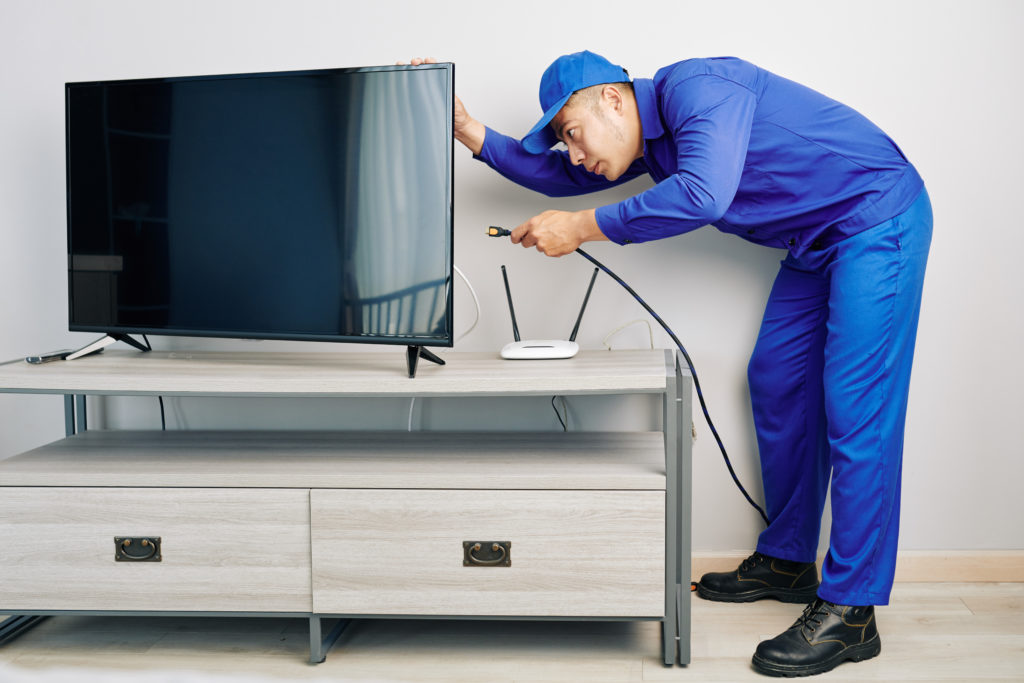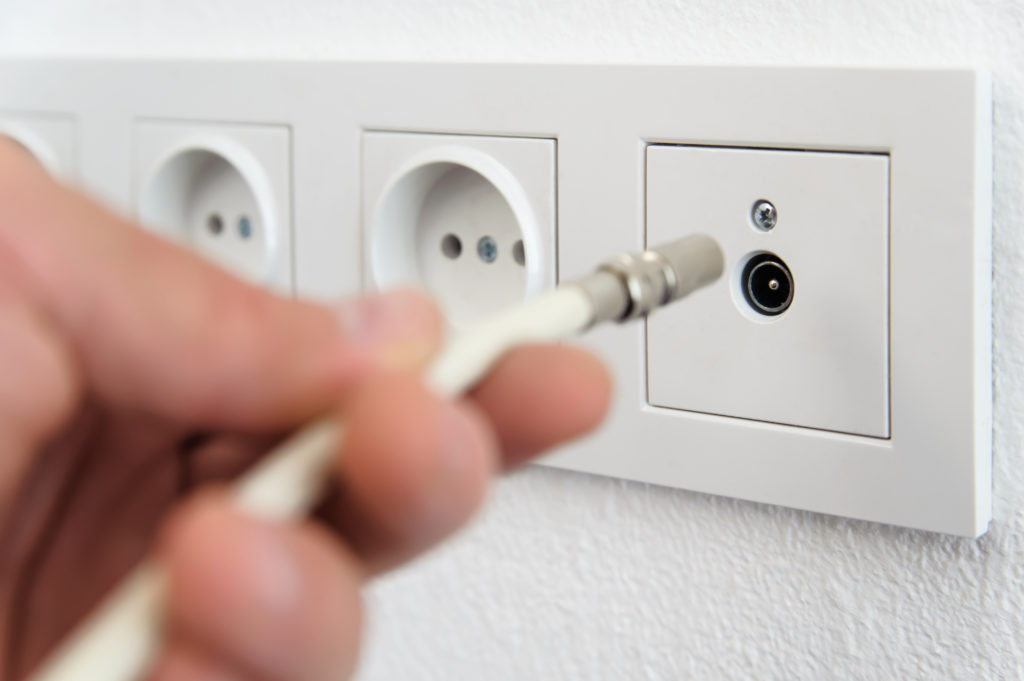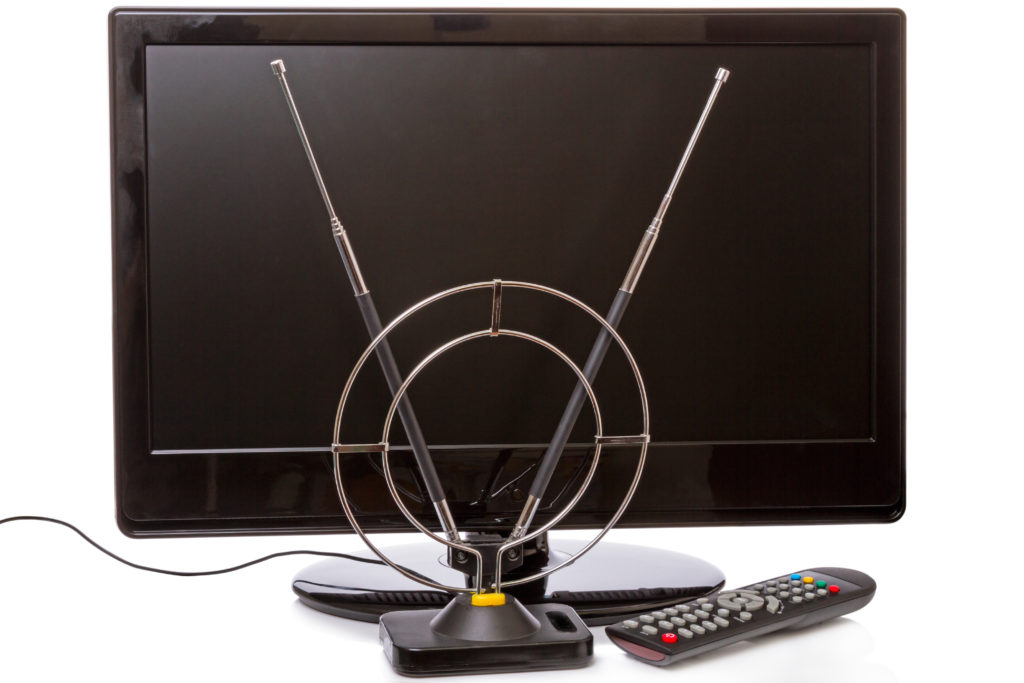Now that you’ve decided to commit to free over-the-air (OTA) television and have purchased your indoor TV antenna, you’ll want to know how to install it correctly. Fortunately, installing an OTA antenna is easy and requires no special expertise.
Step #1: Gather your supplies
The first thing you’ll need to do when learning how to install a TV antenna interior is making sure you have all the right equipment on hand. There’s nothing worse than starting a project and realizing you have to go to the hardware store to get something you need.
Here are the items you may need for a complete TV antenna installation:
- Indoor TV antenna of your choice with associated hardware
- A digital tuner, if you are using one
- A TV connection cable
- 75 ohm male to male coaxial extension cable
- Pliers
- Screwdrivers
- Nuts, screws
- Hot tape gun of glue and/or sign putty
>
You may not need all of these items, depending on where you end up placing your antenna.

Step #2 : connect your TV and antenna
As long as you have a newer TV (made after 2 006), your indoor antenna should be plug-and-play. Simply plug the coaxial cable from the antenna into the jack labeled “Antenna/Cable” on the back of your TV.
If your TV is older, you’ll definitely need some type of digital tuner: you already be it a VCR, DVD or DVR with a digital tuner or a digital converter box. You’ll connect your antenna to the digital tuner, and then connect the digital tuner to the TV.
If your antenna requires a power source, you’ll need a nearby electrical outlet or USB port if that applies to your model. Connect your antenna; after that, it’s a simple matter of going to the “Settings” menu on your TV screen to scan for channels. Look for an option for “Channels” or “Tuning,” and you’ll want to set it to “Auto.” Just remember that every TV and converter box varies when it comes to this part of the process, so you may need to consult a manual to find out the best way to scan for the channels available to you.
And that’s where to put your antenna in.

Step #3: Find the right location for your antenna
When it comes to placing your antenna, location is key . Take your time with this step as it can significantly affect your TV viewing experience. You will want to place the antenna in a location with the fewest obstructions and least interference. So try a spot that’s in the middle of an upper story window or patio door. However, avoid doors with reflective mesh or metal linings; these can block TV signals. Indoor TV antennas are often designed to blend in with décor, it should be relatively unobtrusive.
Make sure the site you choose allows you to point the antenna toward local broadcast towers, wherever you may be be. If you don’t know, a resource like AntennaWeb.org or RabbitEars.info can help you. The RCA Signal Finder app, available for iOS and Android phones, is another great option.
You’ll want to experiment a bit with moving the antenna around. Sometimes just a few inches one way or the other can affect reception or even the channels you receive. If your antenna has a “rescan” option within its Settings section, use it to help you find a sweet spot for your signal.
Note that your antenna doesn’t have to be close to your television. But if it’s too far away, you may need to run a coaxial cable between the TV and the antenna, or use your Wi-Fi network to distribute signals. Just remember, the higher the better (that’s where some of the supplies above can come in handy).

Common errors and troubleshooting
Problems signal reception: If you are having trouble receiving a TV signal, this could be due to a few different issues. It could just be that you don’t have a clear path to the broadcast towers. In that case, you want to place your antenna as high up inside your home as possible. If you continue to have problems, you may want to consider an outdoor antenna.
Another common problem is that your signal can be degraded by the distance between your antenna, your tuner, and your TV, especially if you’re using a splitter. Antennas Direct estimates that if your coaxial cable is longer than 100 feet, you may be losing up to a third of your signal before it reaches your TV. In this situation, you may want to purchase an amplifier to improve the signal.

Missing Station: If you can’t find a particular station you like, this may be because while most stations broadcast on the UHF frequency, some they use VHF. You need an antenna that is optimized for both if you want to receive both UHF and VHF based channels. VHF signals are actually better at getting around obstacles, but they have different requirements for you to receive them correctly.
Channels disappear: If your broadcast channels sometimes change or disappear, this can be due to a number of problems. The frequency of a channel can occasionally drift, which you can rectify with a simple rescan. Sometimes TV channels use reduced power at different times or disappear entirely because they are not popular. Or, you may want to check the position of your antenna. If it’s moved even a little, it could be affecting your reception.
Tip: Check your connections and look for interference. Don’t forget to check for loose wires and connections, or corroded parts. And make sure your other devices (from fluorescent lights to Bluetooth devices) are not causing interference.

As you can see, figuring out how to install an indoor antenna isn’t too difficult, as long as you do it correctly. location. Once your antenna is installed, you’ll be on your way to saving money by watching free OTA TV.
.
